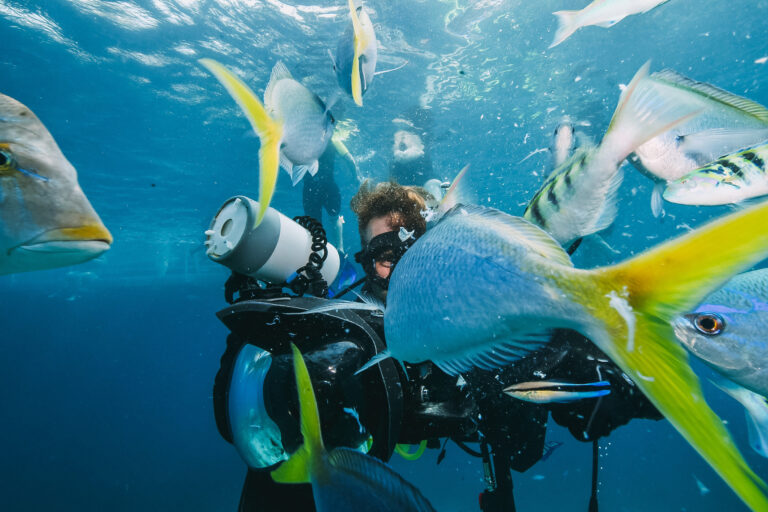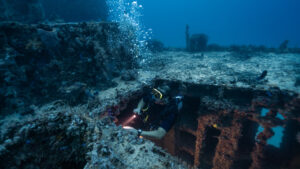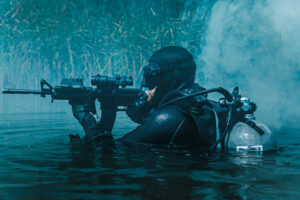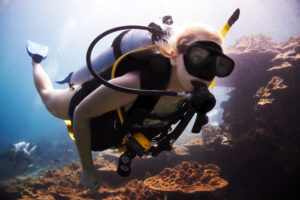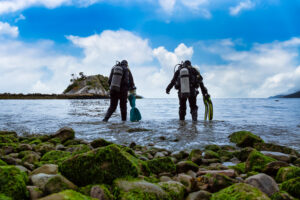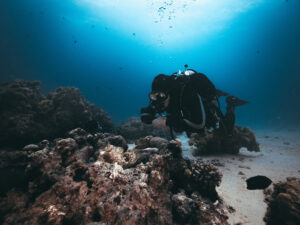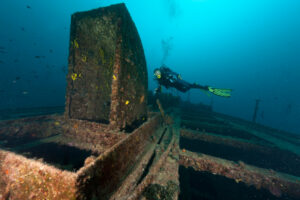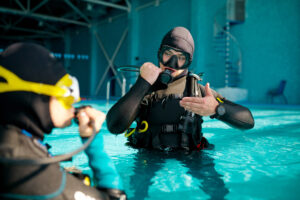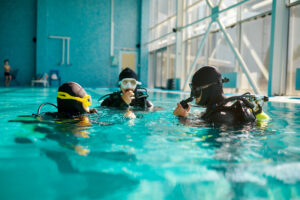What is a A-Clamp Adaptor for Scuba Diving?
Scuba diving is a mesmerizing endeavor that introduces enthusiasts to an enchanting world beneath the water’s surface. The equipment used in scuba diving not only contributes to the safety and comfort of the diver but also enables seamless exploration. One such component is the A-clamp adaptor, which plays an integral role in connecting the diving regulator or filling whip with the diving cylinder. This entry delves into the intriguing world of the A-clamp adaptor, its significance, usage, and relation with the DIN thread connection and the CGA 850 “international” connection cylinder valve.
Understanding the A-Clamp Adaptor
The A-clamp adaptor, also known as a yoke adaptor, is a critical part of the diver’s kit. It facilitates the connection of a regulator or filling whip, which is the hose utilized for transferring gas to the scuba cylinder, to a diving cylinder valve. This connecting component is imperative for maintaining an uninterrupted supply of breathing gas to the diver.
The A-clamp adaptor received its name from the “A” shape it forms when attached to a diving cylinder. This device is traditionally made of metal, typically brass, and comes with a screw and a sealing O-ring to ensure a safe and secure connection.
The Role of the A-Clamp Adaptor
The A-clamp adaptor primarily serves as a link between the scuba regulator and the cylinder valve. The scuba regulator controls the flow of gas from the cylinder, transforming high pressure into breathable gas. The A-clamp adaptor, therefore, is the bridge that ensures this regulated gas reaches the diver.
The A-clamp adaptor also comes into play in the process of filling the scuba cylinder. The filling whip, a special high-pressure hose, utilizes this adaptor for connection to the cylinder valve, allowing for efficient and secure gas transfer.
A-Clamp Adaptor and DIN Connection
DIN, an acronym for Deutsches Institut für Normung (the German Institute for Standardization), refers to a type of valve connection popular in European countries. DIN connections provide a secure link between the regulator and the cylinder valve by screwing directly into the valve.
The A-clamp adaptor plays a crucial role when dealing with DIN connections. The DIN regulator, designed for a more secure and streamlined connection, cannot connect to an A-clamp or yoke valve without an adaptor. The A-clamp adaptor allows divers to use DIN regulators with yoke valves, providing versatility and expanding the range of potential equipment combinations.
Interplay between A-Clamp and DIN
While the DIN connection is generally considered more secure due to the direct screw-in mechanism, it’s not universal. Many diving locations, particularly in North America and the Caribbean, predominantly use A-clamp valves on their cylinders. For divers with DIN regulators traveling to these regions, an A-clamp adaptor becomes an essential piece of equipment.
The adaptor allows for a seamless transition from a DIN regulator to an A-clamp valve. It is screwed into the DIN regulator, effectively converting it into an A-clamp regulator that can be connected to the yoke valve on the cylinder. This adaptability is a significant advantage, allowing divers to use their preferred DIN regulators regardless of the local cylinder valve type.
A-Clamp Adaptor and CGA 850 Connection
CGA 850, commonly referred to as the “international” connection, is a standard established by the Compressed Gas Association. This connection type is universally accepted and is widely used in recreational scuba diving.
The A-clamp adaptor plays a significant role when using cylinders with CGA 850 valves. The CGA 850 valve is a form of yoke valve, and thus, an A-clamp adaptor is required for
connecting a DIN regulator to these cylinders.
Necessity of the A-Clamp Adaptor with CGA 850 Connection
Given the international acceptance of CGA 850 valves, many dive centers, particularly those catering to recreational divers, use these valves on their cylinders. For divers using DIN regulators, this necessitates the use of an A-clamp adaptor.
The A-clamp adaptor allows the DIN regulator to connect to the CGA 850 valve by acting as an interface. Once the adaptor is screwed into the DIN regulator, it converts the regulator into an A-clamp configuration compatible with the CGA 850 valve. This conversion ensures the diver can use their personal DIN regulator with any cylinder equipped with a CGA 850 valve, thus expanding the regulator’s versatility.
Safety Considerations
While the A-clamp adaptor provides the necessary flexibility for divers, it’s crucial to keep safety considerations in mind. Proper installation and regular maintenance of the adaptor are fundamental to ensuring the safety of the diver.
Proper Installation
The installation of the A-clamp adaptor onto the DIN regulator must be done carefully. The adaptor should be screwed securely into the DIN connection without cross-threading, which can damage the threads and compromise the connection’s integrity. A correctly installed adaptor will ensure a leak-free connection with the cylinder valve.
Once the adaptor is installed, connecting it to the cylinder valve requires careful alignment and tightening of the A-clamp screw. Over-tightening can damage the O-ring, leading to potential leaks, while under-tightening may not provide a secure seal.
Regular Maintenance
Like all diving equipment, the A-clamp adaptor requires regular maintenance to ensure its longevity and reliability. This includes periodic checks for any signs of wear or damage, particularly on the screw threads and the O-ring.
The O-ring should be replaced at the first sign of wear or damage, as it is crucial for maintaining a secure and leak-free connection. Similarly, any signs of corrosion or damage to the adaptor body or screw threads should be addressed promptly to prevent potential failure during a dive.
Factors to Consider When Choosing an A-Clamp Adaptor
When selecting an A-clamp adaptor for your diving needs, various factors need to be considered. From the construction material to the specific design features, these elements can significantly affect the adaptor’s performance and durability.
Construction Material
Most A-clamp adaptors are made of brass, a material known for its durability and resistance to corrosion, particularly important given the exposure to saltwater in scuba diving. However, some adaptors may feature stainless steel or aluminum components, which also offer high resistance to corrosion but may vary in terms of weight and strength.
Design and Compatibility
It’s essential to ensure the A-clamp adaptor is compatible with the specific DIN regulator and cylinder valve being used. While most adaptors are designed to fit standard DIN connections and A-clamp or CGA 850 valves, some variations may require specific adaptors. Always verify the compatibility of your equipment before diving.
Brand Reputation and Reviews
Given the critical role of the A-clamp adaptor in ensuring a secure connection and an uninterrupted gas supply, choosing a reputable brand can offer additional peace of mind. Online reviews and recommendations from fellow divers can provide valuable insights into the reliability and performance of different adaptors.
The Impact of Technological Advancements on A-Clamp Adaptors
Over the years, technological advancements have also touched the realm of scuba diving adaptors. These developments aim to enhance the performance, safety, and durability of A-clamp adaptors.
Improved Materials
Advancements in material science have led to the development of alloys that offer superior corrosion resistance and strength. This results in A-clamp adaptors that can withstand the harsh marine environment for longer periods without compromising performance or safety.
Enhanced Design
Modern A-clamp adaptors may feature design enhancements, such as improved screw threads for easier installation and removal, or better sealing mechanisms to reduce the risk of leaks. Some adaptors also come with additional features, like pressure release valves, to enhance safety during the filling process.
The Future of A-Clamp Adaptors
As we look towards the future of scuba diving, the role of the A-clamp adaptor remains steadfast. However, with ongoing advancements in technology, design, and materials, it’s likely we will see continued evolution in this essential piece of diving equipment.
Innovations in Design
Innovations in design will likely continue to enhance the efficiency and safety of A-clamp adaptors. For example, we may see developments in quick-release mechanisms, allowing for faster and easier connection and disconnection from cylinder valves. Additionally, improvements in the design of the O-ring seal could further minimize the risk of leaks, thereby improving diver safety.
Advances in Materials
Materials science will continue to play a significant role in the future of A-clamp adaptors. The development of even more corrosion-resistant alloys could extend the life of these adaptors, reducing the need for frequent replacements and contributing to a more sustainable diving practice.
Integration with Digital Technologies
As digital technologies increasingly permeate all aspects of life, we may also see their integration with A-clamp adaptors. For instance, embedded sensors could provide real-time information on the adaptor’s condition, alerting divers to potential issues such as wear or leaks before they become serious problems.
Practical Tips for Using an A-Clamp Adaptor
For those using an A-clamp adaptor, there are several practical tips to ensure a safe and smooth diving experience.
Regular Inspection
Before each dive, inspect your A-clamp adaptor for signs of wear or damage. This includes checking the condition of the O-ring and the screw threads. Any damage or wear could compromise the connection and lead to potential gas leaks.
Correct Installation
Always ensure the A-clamp adaptor is correctly installed on the DIN regulator and securely connected to the cylinder valve. Remember not to over-tighten the A-clamp screw, as this can damage the O-ring.
Rinse After Each Dive
After each dive, rinse your A-clamp adaptor thoroughly with fresh water to remove any salt, sand, or other debris. This can prevent corrosion and extend the life of the adaptor.
Responsible Diving and the A-Clamp Adaptor
Diving is not only about exploration but also about respect for the environment. The A-clamp adaptor plays a role here too, by promoting responsible and sustainable diving practices.
Reducing Equipment Waste
By allowing the use of DIN regulators with different types of cylinder valves, the A-clamp adaptor reduces the need for divers to purchase multiple regulators for different diving locations. This not only saves divers money but also reduces equipment waste, contributing to a more sustainable diving industry.
Promoting Equipment Maintenance
The A-clamp adaptor encourages regular equipment maintenance. By caring for their adaptors, divers can extend the lifespan of their equipment, reducing the need for replacements and minimizing waste.
Diving into the Future with the A-Clamp Adaptor
As we move into the future, the A-clamp adaptor will continue to be a trusted companion to divers worldwide. Its small size belies its significance, but those who understand its function know its value. This crucial piece of equipment encapsulates the spirit of scuba diving – the pursuit of exploration, the embrace of technological advancements, and the commitment to sustainable practices.
Whether you’re a seasoned diver or a beginner just starting your underwater journey, the A-clamp adaptor is more than just a piece of equipment. It’s a key that unlocks the door to the mesmerizing underwater world, a testament to human ingenuity, and a constant reminder of our responsibility towards the environment. So, the next time you gear up for a dive, take a moment to appreciate this small yet mighty component in your kit.
Key Takeaways
The A-clamp adaptor, although a small and often overlooked component, plays a crucial role in scuba diving. It serves as an interface between the diver’s regulator and the diving cylinder, ensuring the uninterrupted supply of breathing gas. With its ability to bridge the gap between DIN and A-clamp connections, as well as its compatibility with the widely accepted CGA 850 valve, this adaptor provides divers with the flexibility to use their preferred equipment across different diving locations. When used correctly and maintained regularly, the A-clamp adaptor contributes significantly to a safe and enjoyable diving experience.

